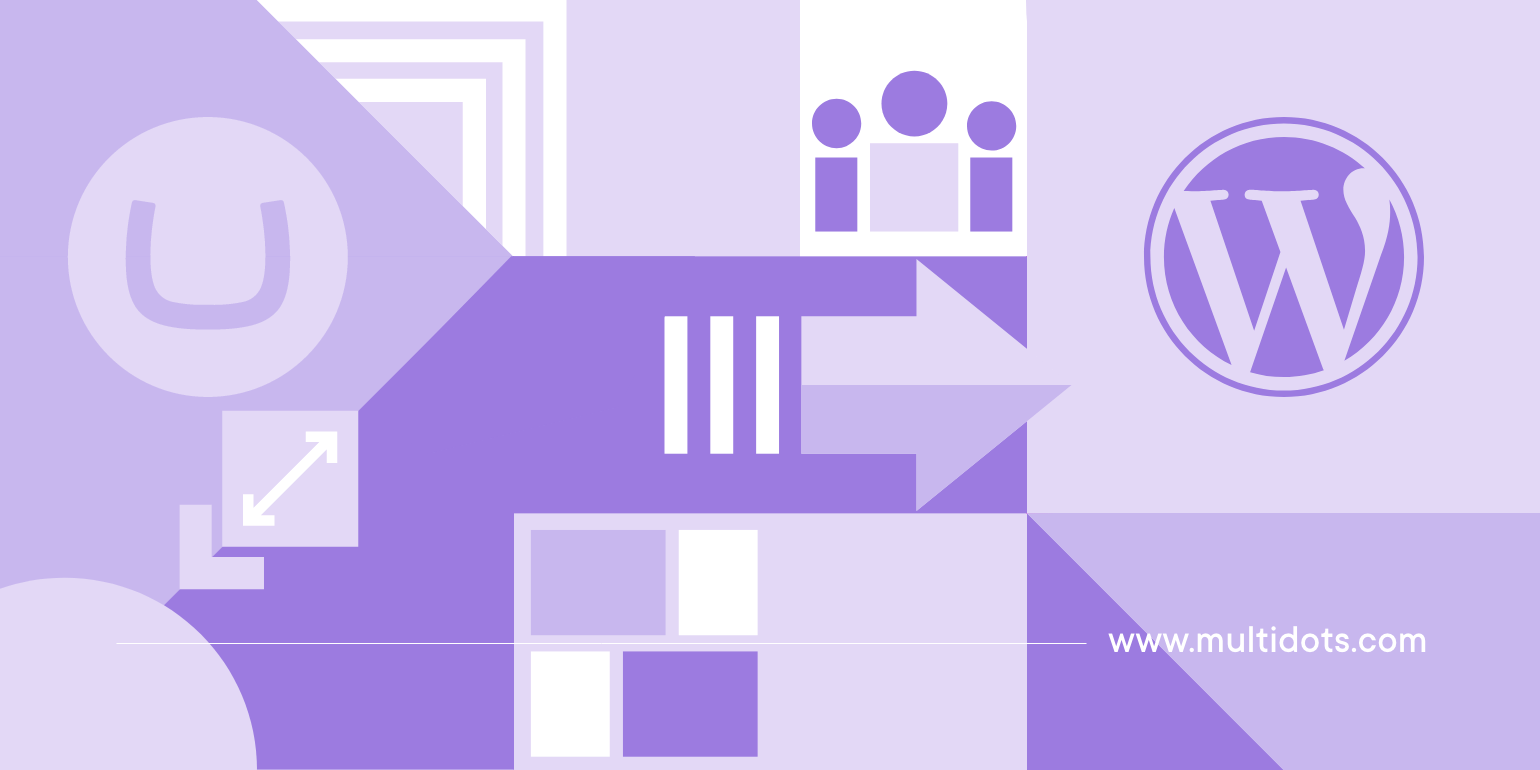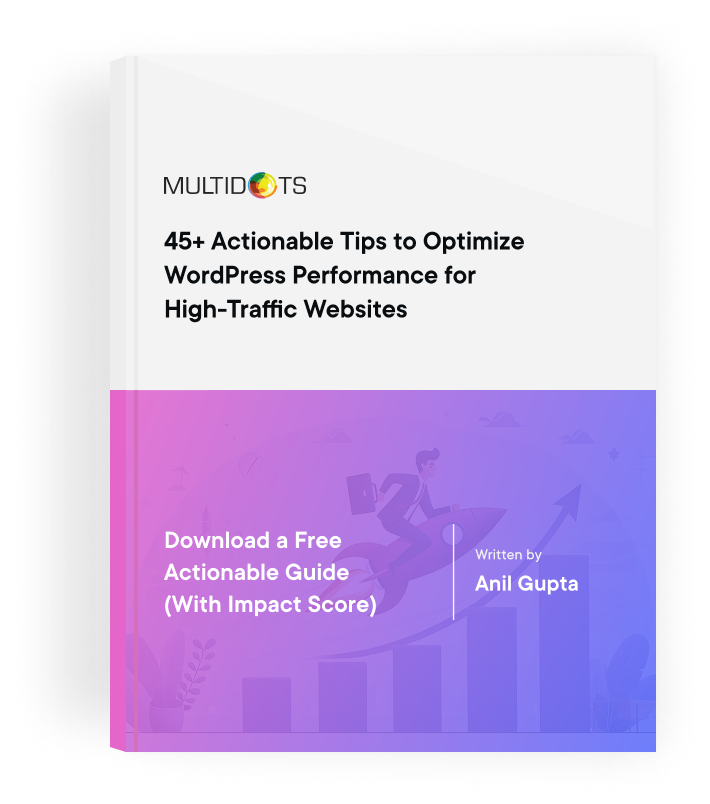Moving from Umbraco: Why WordPress is the best choice for you?
Explore the benefits of moving from Umbraco to WordPress and why it’s the ideal choice for your business needs

Table of Contents
Umbraco, a popular content management system (CMS) built on Microsoft's .NET framework, is lauded for its flexibility, strong security features, and ability to handle complex content management requirements.
Despite its advantages, users often struggle with challenges such as a steep learning curve, limited templates and themes, and smaller community support compared to other platforms.
Businesses and enterprises that have built their platforms on Umbraco often desire a CMS with an intuitive interface that allows for easier extensibility to incorporate more features with global community support. Moreover, with Umbraco 8’s end-of-life deadline rapidly approaching in February 2025, businesses are eager to explore better CMSes that offer robust features instead of risking their website performance by continuing on an unsupported platform.
This is where WordPress shines as an alternative. By migrating to WordPress, businesses can get access to better support and reduce vulnerabilities associated with using a CMS post its EOL.
In this article, let's look at seven reasons why migrating to WordPress from Umbraco can be the best decision for businesses and enterprises.
1. User-friendly interface
One of the standout features of WordPress that attracts businesses and enterprises is its user-friendly interface. Unlike Umbraco, which often requires a more technical understanding due to its .NET framework and a more complex content management structure, WordPress boasts an intuitive dashboard that makes website management straightforward for users of all skill levels.
This difference between the two CMSes is only more prominent, considering the lack of support due to Umbraco 8’s impending end of life in 2025. In comparison, WordPress makes it easier for non-technical users to adapt to the interface, and any issues can be addressed easily, thanks to its active community support.
For enterprises, the ease of use translates into efficiency and cost-effectiveness. Content creators can publish posts, add pages, or update their site's appearance with minimal effort, allowing faster response times to market changes or content updates.
The simplicity of WordPress’s interface reduces the dependency on IT professionals for everyday tasks, enabling a more agile content strategy.
On the other hand, Umbraco's back-end, while powerful, can be daunting for users unfamiliar with its environment. WordPress, on the other hand, is designed with a focus on usability, featuring a WYSIWYG (What You See Is What You Get) editor and customizable menus that make navigation and content creation a breeze.
2. Extensive Theme and Plugin Ecosystem
The extensive theme and plugin ecosystem of WordPress helps users to easily customize and extend the functionality of their websites without deep coding knowledge. Businesses and enterprises migrating from Umbraco can choose from thousands of free and premium customizable themes available to give their website a uniquely aesthetic appearance.
Furthermore, the vast array of plugins enables the addition of complex functionalities ranging from SEO to e-commerce capabilities, social media integration, and beyond.
For businesses and enterprises, this means the ability to rapidly adapt and evolve their online presence to meet changing market demands or business objectives.
Comparatively, Umbraco also offers a degree of flexibility through its packages (Umbraco's equivalent to plugins) and themes. However, as Umbraco version 8 end-of-life is right around the corner, the limited plugin ecosystem makes it even more complicated for users to adapt to new requirements. Moreover, the plugin directory offered by Umbraco does not compare to the scale and variety found in WordPress's ecosystem, which is unmatched.
3. Active Community and Support Resources
The WordPress community is one of the largest and most active in the world of CMS platforms, offering an extensive range of forums, blogs, online tutorials, and meetups that provide invaluable assistance and learning opportunities.
Consequently, WordPress users can easily find comprehensive solutions to their personalized problems, discuss best practices to get the most out of their website, and keep up with the latest updates and trends.
Whether it's troubleshooting a plugin issue or seeking advice on website optimization, there's likely a community member who can offer insights or a solution, even for businesses and enterprises. This contrasts with Umbraco, where the community, though knowledgeable and helpful, is smaller and might not provide the same breadth of support and resources. This combined with Umbraco 8 EOL, means that you might not get enough support to address important issues after it.
Moreover, WordPress users benefit from a vast repository of documentation, including official guides, codex, and developer resources, catering to users of all skill levels. The availability of such resources reduces downtime and accelerates the learning curve, enabling businesses to maintain and enhance their online presence more efficiently.
4. Scalable and Flexible
WordPress is renowned for its scalability and flexibility, making it an ideal choice for businesses and enterprises at any stage of growth. Unlike Umbraco, which, while powerful, can sometimes require more complex development work to scale or customize extensively, WordPress offers a more straightforward path to scaling up or down as business needs change.
For businesses, this scalability means that WordPress can support their online presence from startup to enterprise level without the need to migrate to another platform as they grow. This ease of scaling can save time and resources.
For businesses, this scalability means that WordPress can support their online presence from startup to enterprise level without the need for migrating to another platform as they grow. This ease of scaling can save time and resources.
Additionally, WordPress's flexibility allows businesses to tailor their sites to their specific needs, whether that's integrating with third-party services, customizing workflows, or creating a unique user experience.
Comparatively, Umbraco does offer a high degree of customization and flexibility, especially for those with .NET expertise. However, achieving the same level of customization and scalability in Umbraco can often require more technical skill and development time, which might not be ideal for all businesses.
5. Out-of-box SEO Capabilities
WordPress is widely acclaimed for its superior out-of-box SEO capabilities, a crucial advantage for businesses and enterprises focusing on enhancing their online visibility. The platform is designed with SEO in mind, offering features such as clean permalink structures, easy content categorization, and automatic generation of meta tags.
These foundational SEO features enable websites to perform better in search engine rankings from the outset. For businesses, this readiness translates into reduced time and effort needed to optimize their sites for search engines.
Unlike Umbraco, where SEO often requires additional plugins or manual coding to achieve the same level of effectiveness, WordPress users can leverage popular SEO plugins like Yoast SEO or All in One SEO Pack. Plus, when you are migrating to WordPress after Umbraco 8 end of life, you might be dealing with even more SEO challenges that need to be managed during and after the migration process.
These plugins provide intuitive guides and automated features to optimize content and technical SEO aspects, making it easier for businesses to adhere to best practices without extensive SEO knowledge.
6. Multilingual and Multisite
WordPress stands out for its robust support for multilingual and multi-site capabilities, offering a straightforward way for businesses to expand their reach across different languages and regions.
Through plugins like WPML (WordPress Multilingual Plugin) or Polylang, WordPress enables the creation of fully multilingual websites, allowing businesses to cater to a global audience without the need for separate sites for each language.
Moreover, WordPress's multisite functionality allows businesses to manage multiple websites from a single WordPress installation. This is particularly beneficial for enterprises with different sub-brands or regional sites, as it streamlines website management and ensures consistent quality control across all digital assets.
The ability to share themes and plugins across sites further reduces operational costs and complexity.
Comparatively, Umbraco also supports multilingual content and can manage multiple sites, but setting up and managing these features can be more complex and may require more custom development.
WordPress's simplicity in creating and managing multilingual content and multiple websites is advantageous for businesses and enterprises seeking to enhance their international reach and operational efficiency.
7. Secure and Affordable
While no CMS is immune to security threats, WordPress's vast community contributes to its security by quickly identifying vulnerabilities and releasing updates frequently. On top of that, various security plugins, multiple user roles, and strong password policies can make your WordPress website even more secure.
This allows businesses and enterprises to protect their digital platforms without an extensive in-house IT team.
In terms of affordability, the core software of WordPress is free, and many high-quality themes and plugins are available at no cost or for a nominal fee. This contrasts with Umbraco, which, while offering a free version, may require additional investments for premium features, custom development, or specialized hosting to accommodate the .NET framework.
Plus, Umbraco v8 EOL can heighten the vulnerabilities in your website even more, making it even more important to migrate to WordPress, which provides a more affordable security solution.
For businesses and enterprises, the affordability of WordPress means that funds can be allocated to other areas, such as content creation, marketing, or custom development work, without sacrificing the quality or functionality of their website.
The combination of WordPress's security features and its cost-effective nature provides businesses with a reliable, budget-friendly platform that doesn't compromise on safety or performance.
Planning Beyond Umbraco 8’s EOL
When a platform like Umbraco 8 reaches its end of life, you will no longer have to receive any updates, security patches, or customer support. Without access to critical technical support and security features, your Umbraco 8 website will be exposed to several vulnerabilities and compliance issues.
While you can retain your CMS even after Umbraco 8 EOL, we recommend you avoid doing that and migrate to a more robust one to avoid any kind of issues. Your decision to migrate away from Umbraco 8 to a powerful CMS like WordPress before it reaches end of life in February 2025 can help you bypass common issues such as lack of support, operational instability, and even compliance risks down the road.
Wrapping up
WordPress's user-friendly interface, extensive theme and plugin ecosystem, vast community and support resources, unmatched scalability and flexibility, exceptional out-of-box SEO capabilities, and comprehensive multilingual and multi-site functionalities, alongside its secure and cost-effective nature, collectively make it an attractive option for enhancing your online presence.
The transition from Umbraco to WordPress—or from any CMS to another—demands a methodical approach. Businesses and enterprises need to plan meticulously to ensure data integrity, maintain SEO rankings, and provide a seamless user experience throughout the process.
This careful planning helps avoid potential pitfalls and leverages the full spectrum of WordPress's advantages.
As a WordPress migration agency, we can help you make this transition smoother.
References
FAQs
-
WordPress stands out for its user-friendly interface, extensive plugin and theme ecosystem, and robust community support. Its flexibility and scalability cater to both small businesses and large enterprises, making it an adaptable choice for various needs.
-
Umbraco 8 EOL means your website will no longer get customer support or important security updates. As a result, your website may face security and compliance issues and even suffer in terms of overall performance.
-
Migrating from Umbraco to WordPress typically involves exporting your Umbraco content, importing it into WordPress using tools or plugins, and then setting up your WordPress theme and plugins to match your site’s requirements.
-
Businesses often choose WordPress for its simplicity, extensive customization options through plugins and themes, strong SEO capabilities, and large support community. These factors make it an attractive CMS for a wide range of users.
-
WordPress is a powerful, open-source, and highly scalable CMS alternative helping you preventall the issues that your website might otherwise face as a result of Umbraco 8 EOL.
-
The primary distinctions lie in their platform base, with WordPress being PHP-based and Umbraco using .NET. WordPress offers more themes and plugins, whereas Umbraco provides a robust framework for custom development.
-
Exporting an Umbraco website involves manually or using tools to extract the site’s content and data. Since there’s no direct export feature, you may need to use database tools or custom scripts.
-
Migrating to WordPress involves setting up a new WordPress installation, importing your site’s content (either manually or through a migration plugin), and then configuring themes and plugins to replicate your site’s functionality and design.
-
The best migration plugin for WordPress can vary based on your specific needs. Plugins like WP All Import, Duplicator, UpdraftPlus, and All-in-One WP Migration are highly recommended for their ease of use and versatility.
-
To migrate to WordPress, you’ll need your site’s content (posts, pages, images) and, if possible, your database export. Depending on your site, theme files and custom plugin code may also be necessary for a complete migration.
Feel free to schedule a quick call with our migration expert.
Contact Us
